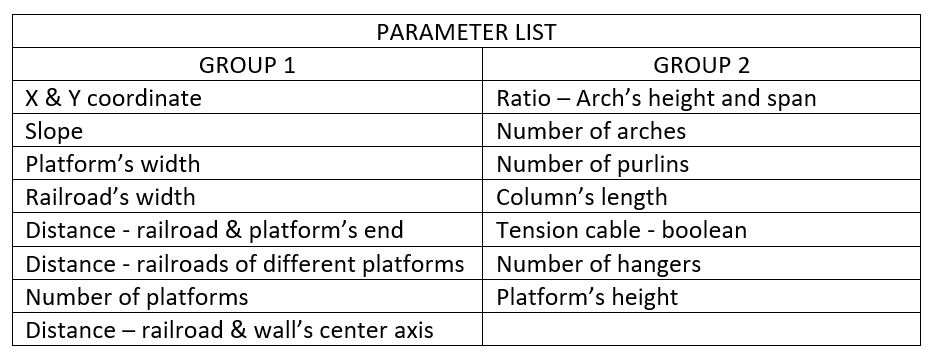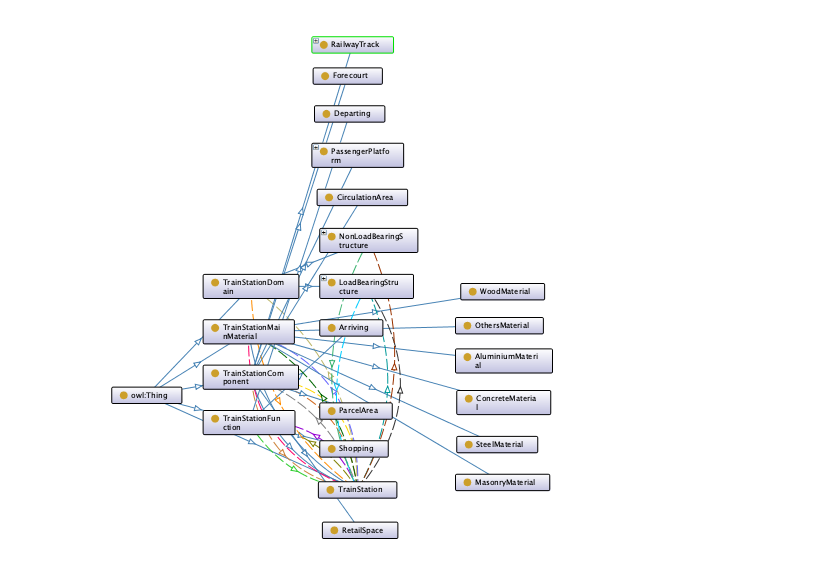INTRODUCTION
Described as one of the most complex projects in the engineering and architectural field, railway/train stations serve the main function of being a gateway. They are the connection between the train and the rest of the world and establish a network from airports to city centers, rural areas, neighborhoods, etc. They act as hubs where the user gets access to the rail network by either departing or arriving to and from urban areas while providing entertainment options to its users in the form of marketplaces.
INITIAL ONTOLOGY – SCOPE
The purpose of the developed ontology is to help the collaboration of architects and engineers in the design process of train stations. For this, the ontology takes not only key components of the architecture field like circulation, spaces and functions but also considers concepts present in the engineering field like structural materials and load-bearing elements. The ontology proposes a way of understanding
which concepts and structures are needed and commonly used when designing a train station.
CONFIGURATION
Old and new stations share a common configuration which has become a standard for the design and development of these types of structures. These can be broken down into six main components:
- Railway track and signaling
- The platforms
- Circulation areas
- Ticket sales and retail space
- Post and parcel areas
- Station forecourt
The typical construction of big stations divides the forecourt and the platforms. While the platforms allow for the travelers and workers to access the rail network, the forecourt contains all of the station services as well as rental
spaces for retail purposes.
STRUCTURE
The main element of the structural system is the three-hinged arch that holds the roof and purlins. The loads are then transferred into columns and then to the foundations. Tension cables and horizontal bracings are also included to increase the stability of the building. Dimensions and materials of the elements are also included in the ontology.
INITIAL ONTOLOGY – VISUALIZATION
PARAMETRIC MODEL
To better understand the relation between the chosen parameters of the model it is necessary to understand how the design of a train station goes. The key factor for deciding a structural system is based on the number of railroads that will go through it. Professionals want to keep the tracks as untouched as possible and they take their parameters as fixed. The geometry, slope, length of the tracks and the distance between them are what decides where platforms will go the main form the structure will have. Thus, these choices were selected as the main parameters of the model.
The parameters are divided into two groups. The first group as mentioned earlier models the geometry of the tracks where trains pass and the distance between each other and to their surroundings as well as the dimensions of the platforms where passengers will wait. the second group of parameters generates the structure that covers the tracks and platforms.

EVALUATION CRITERIA
Evaluation criteria for train station:
- Minimum support forces at the foundation
- Maximum capacity of people per platform
